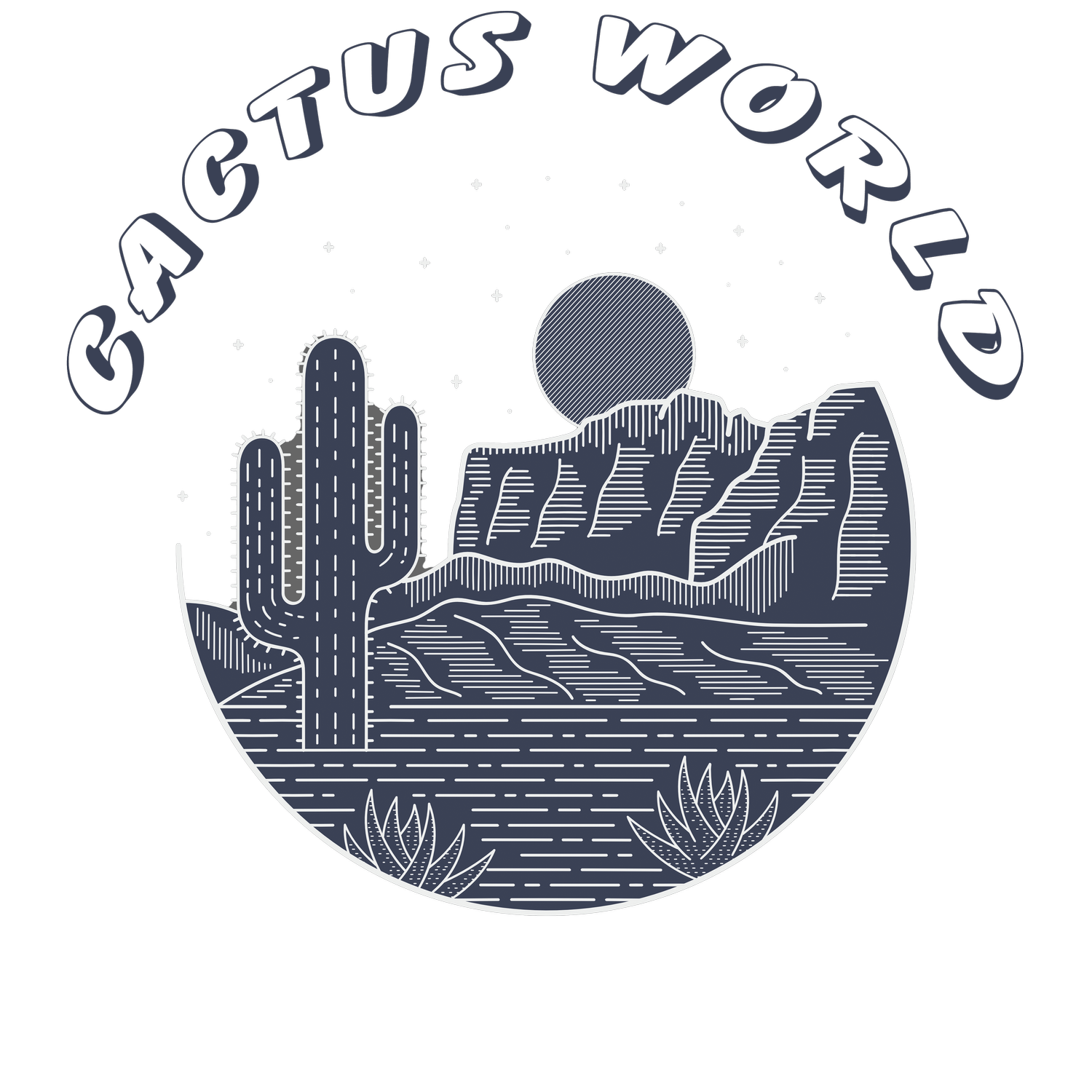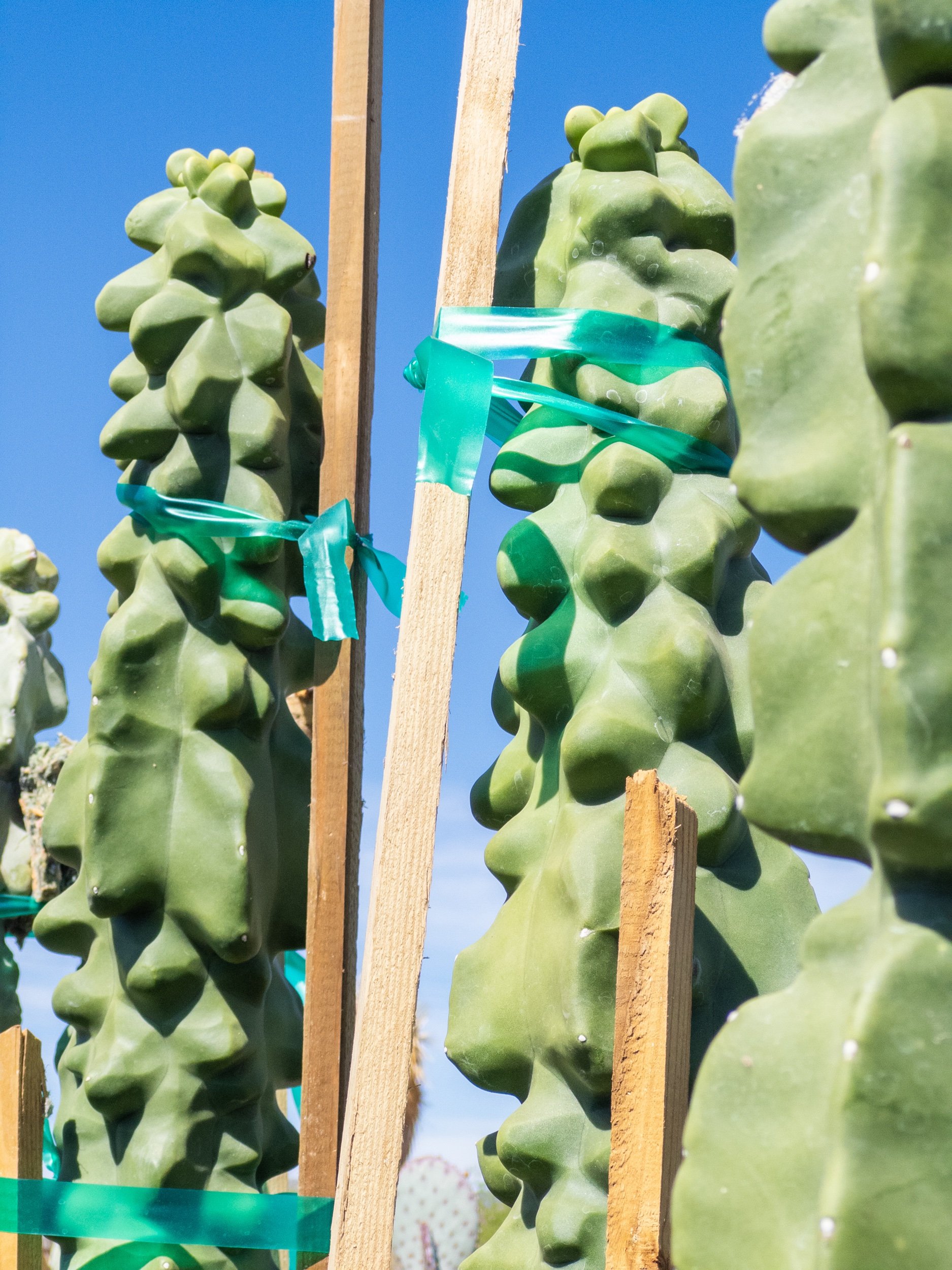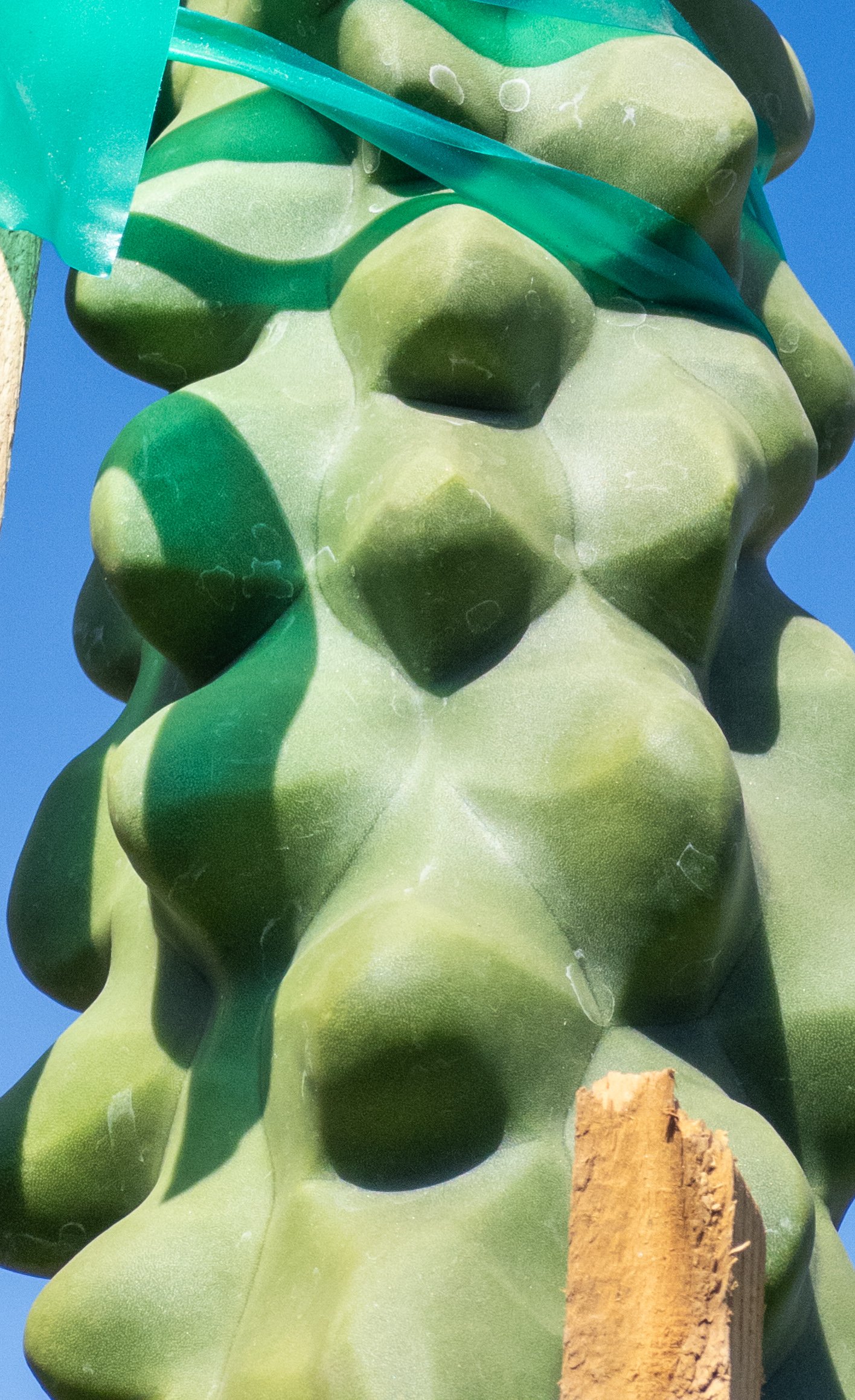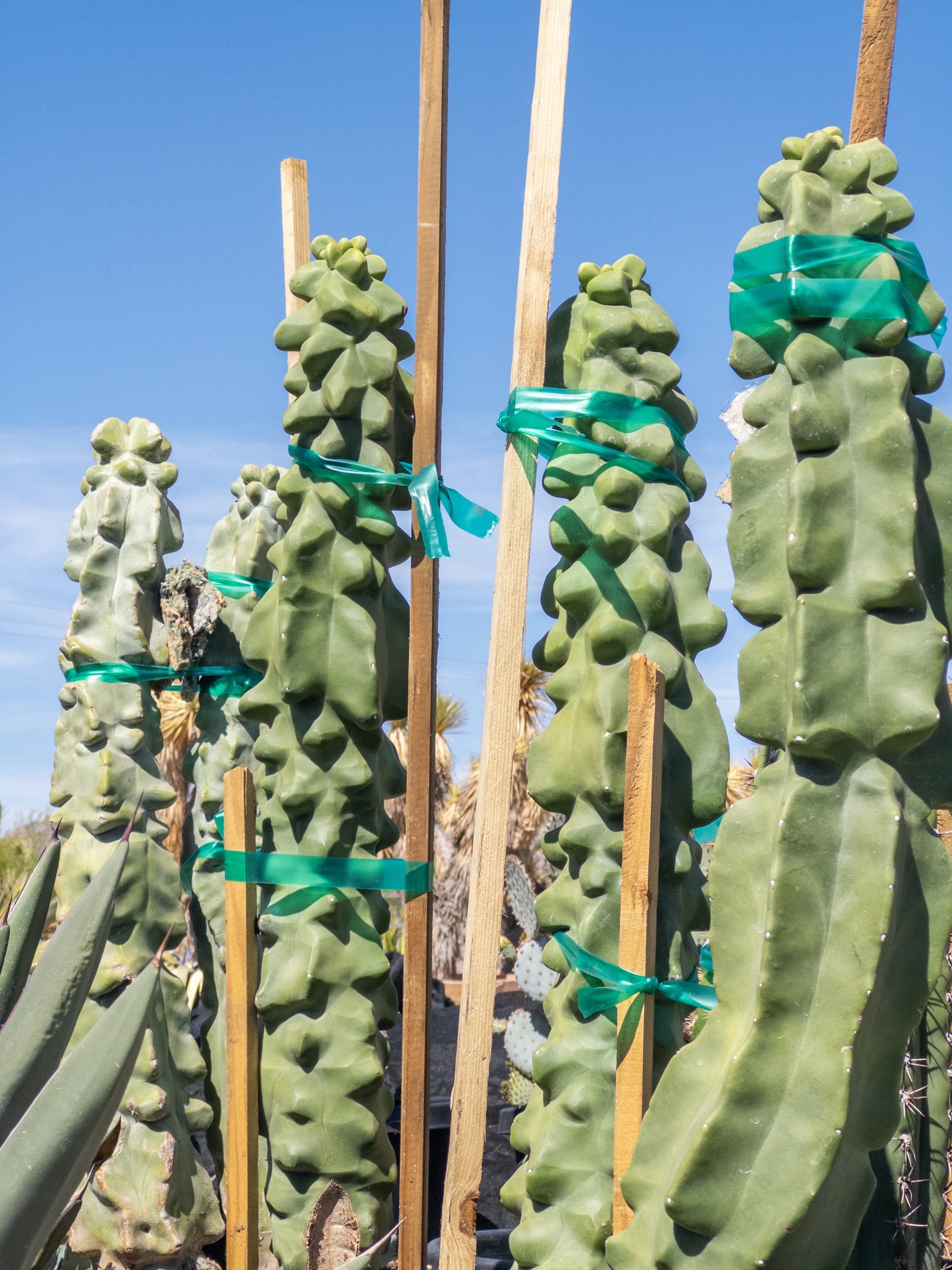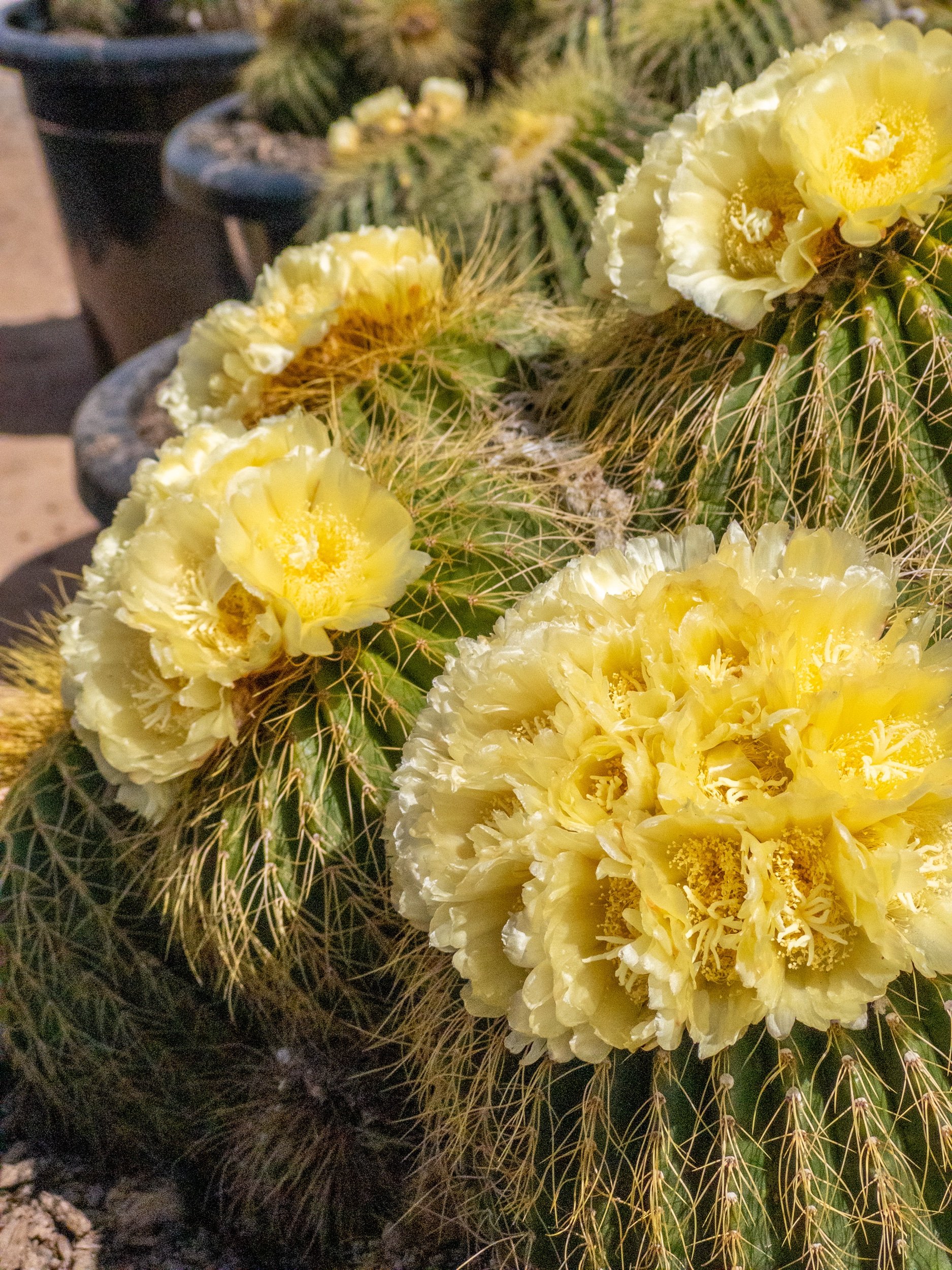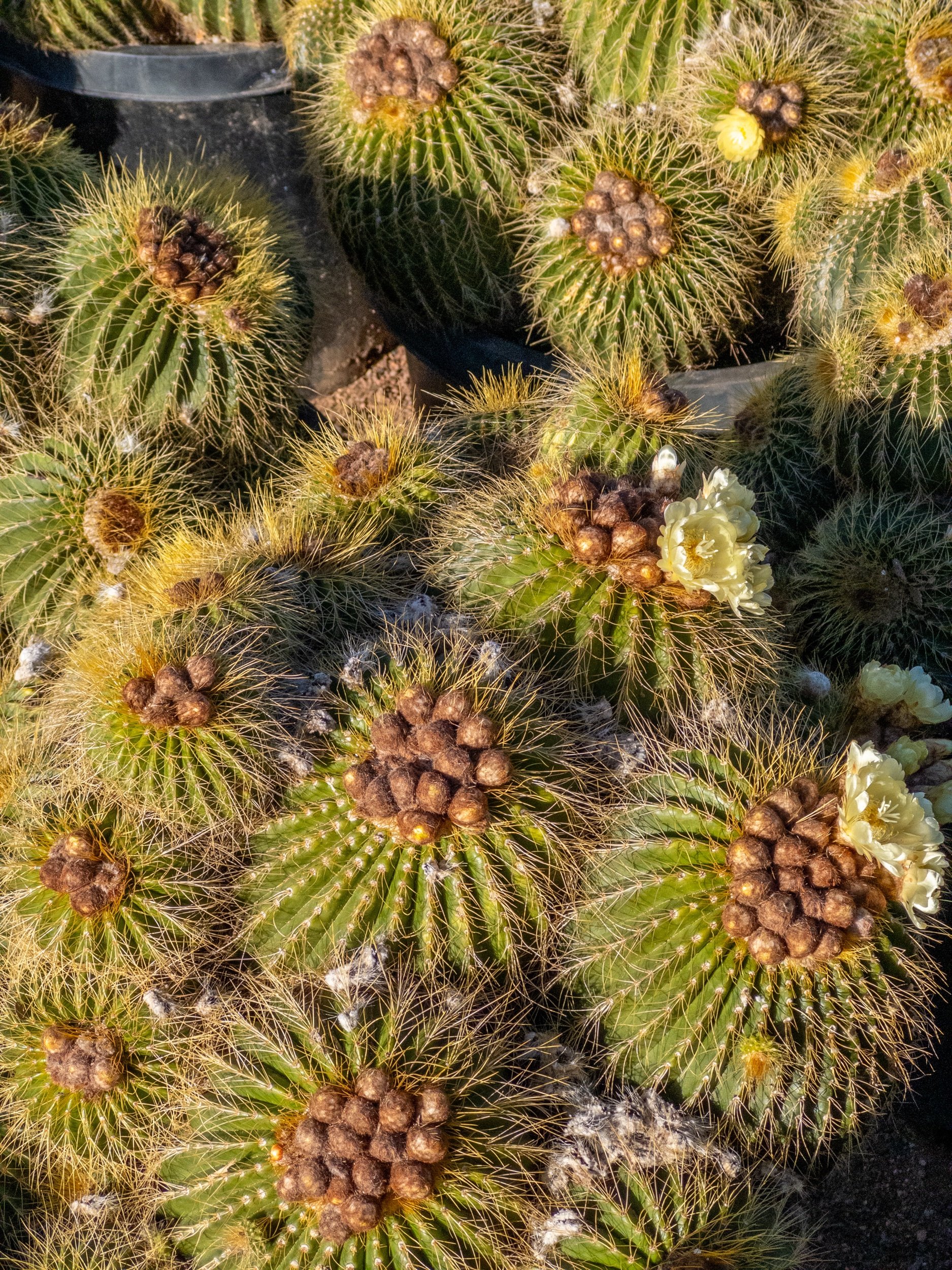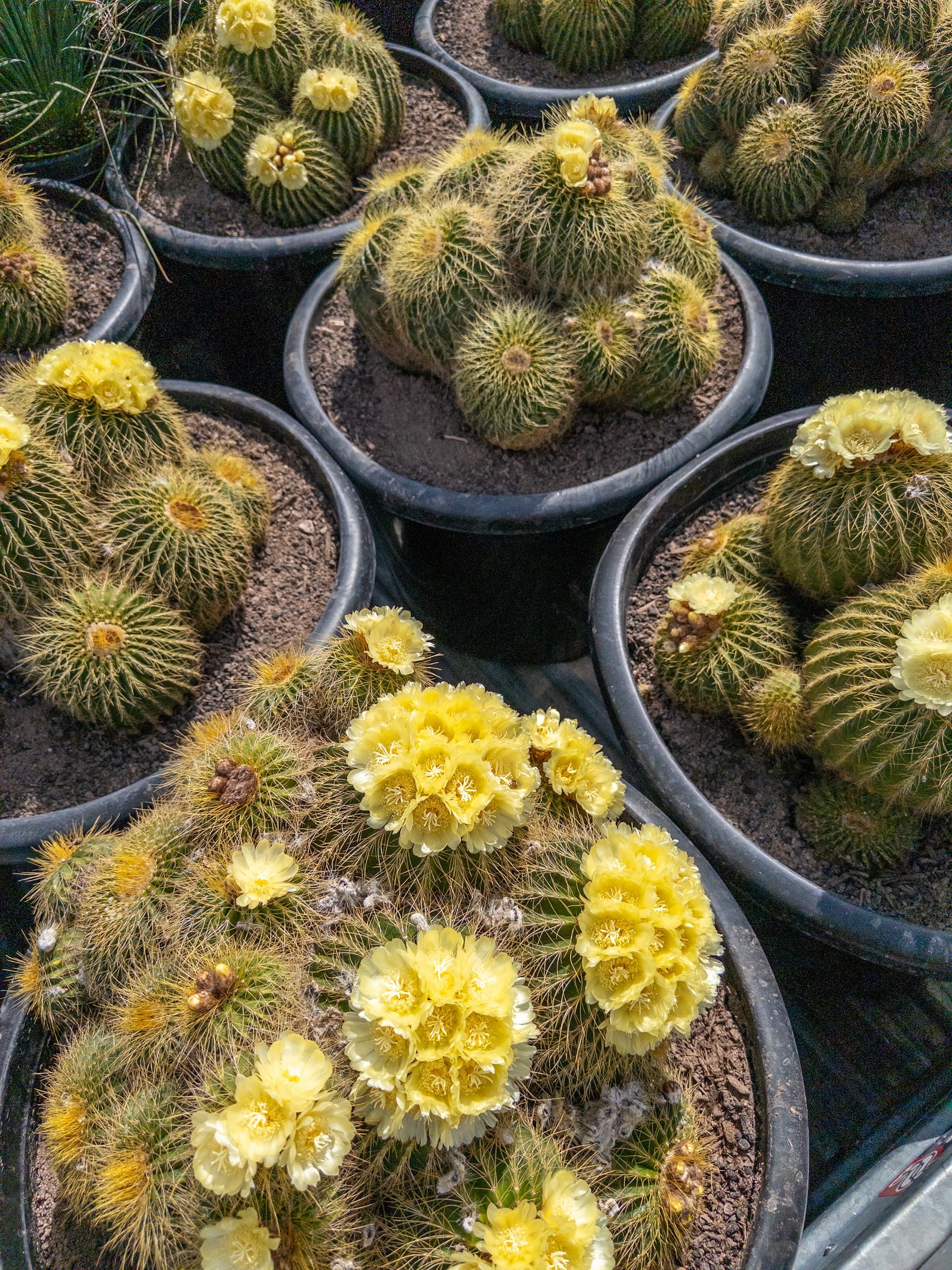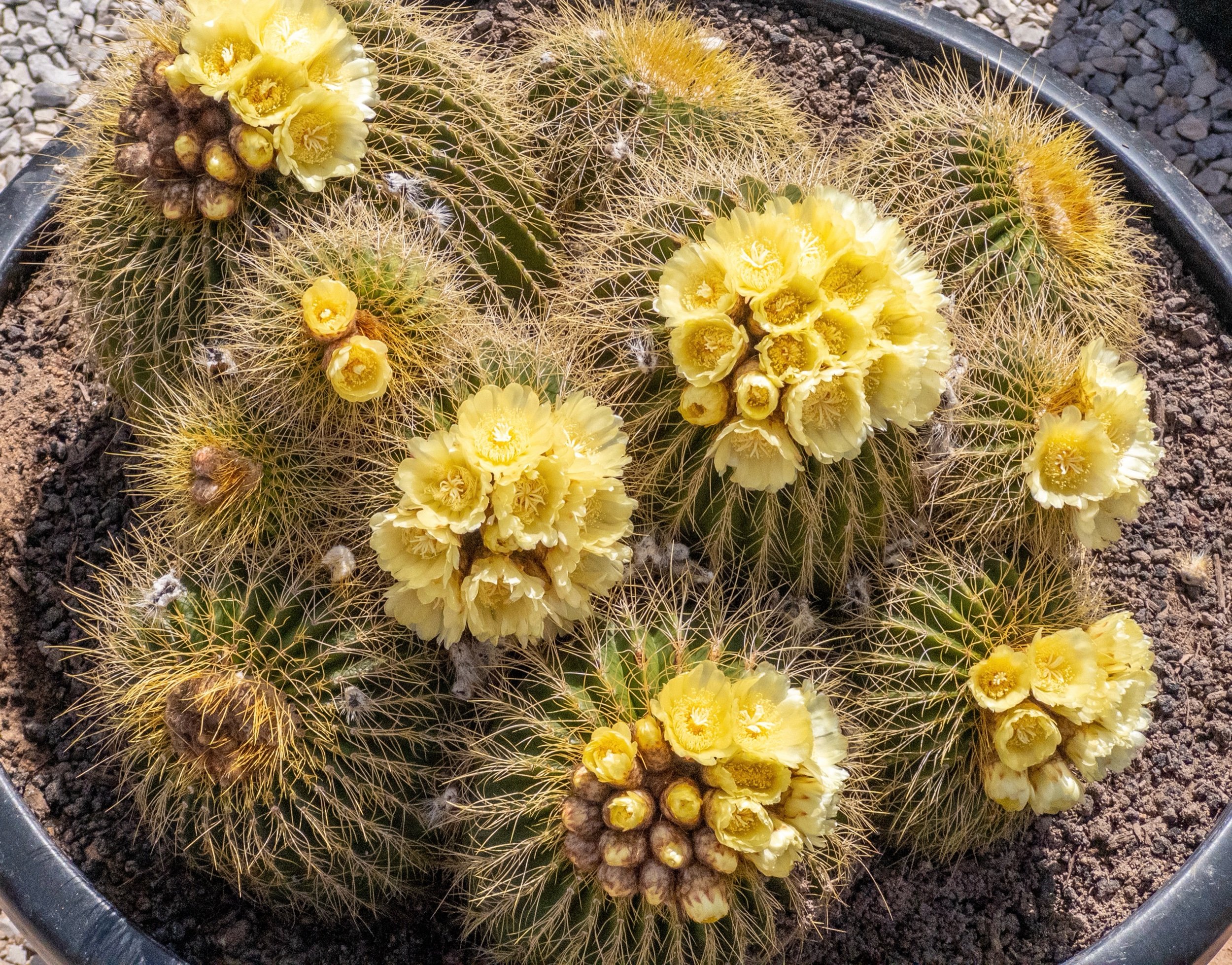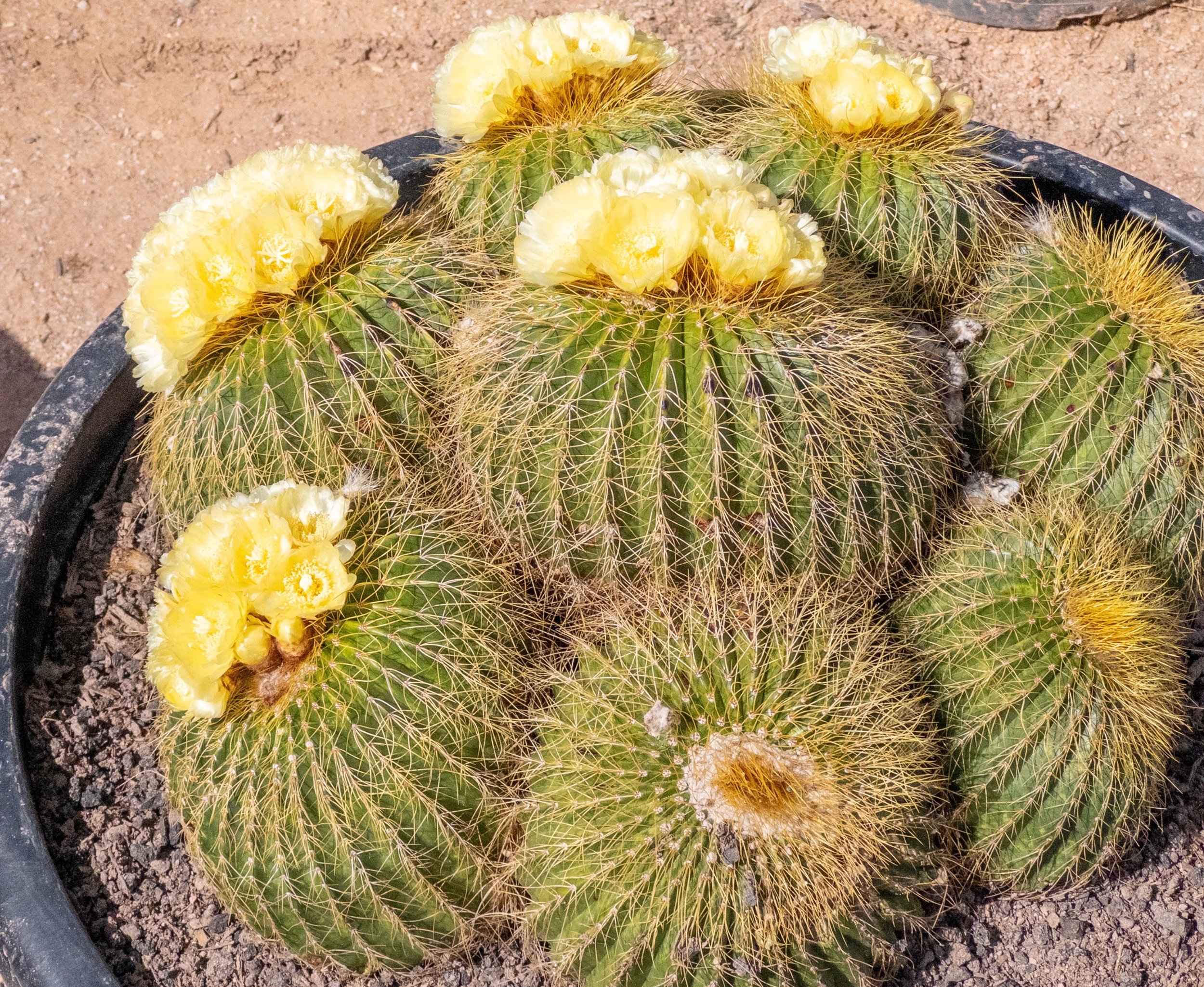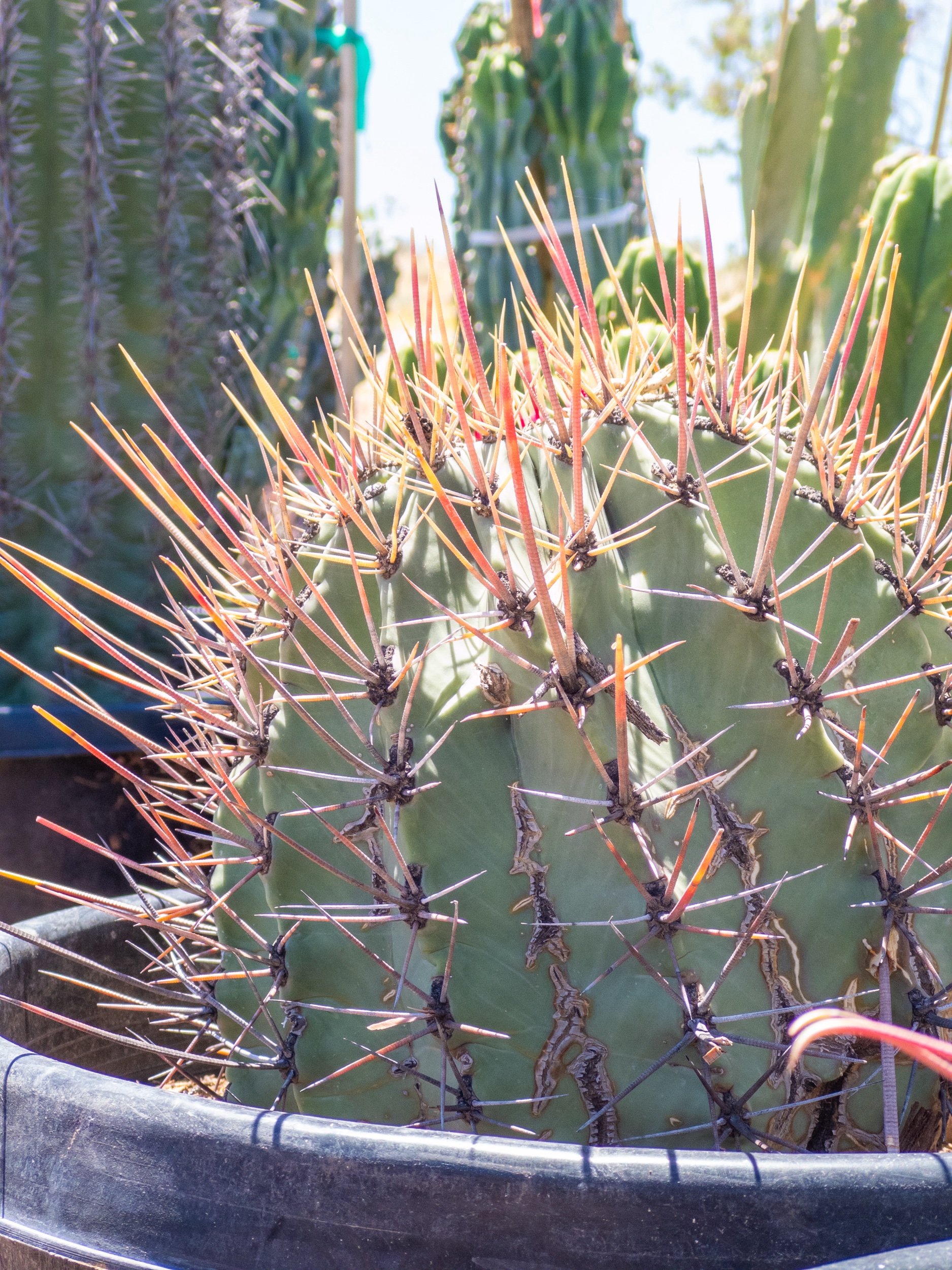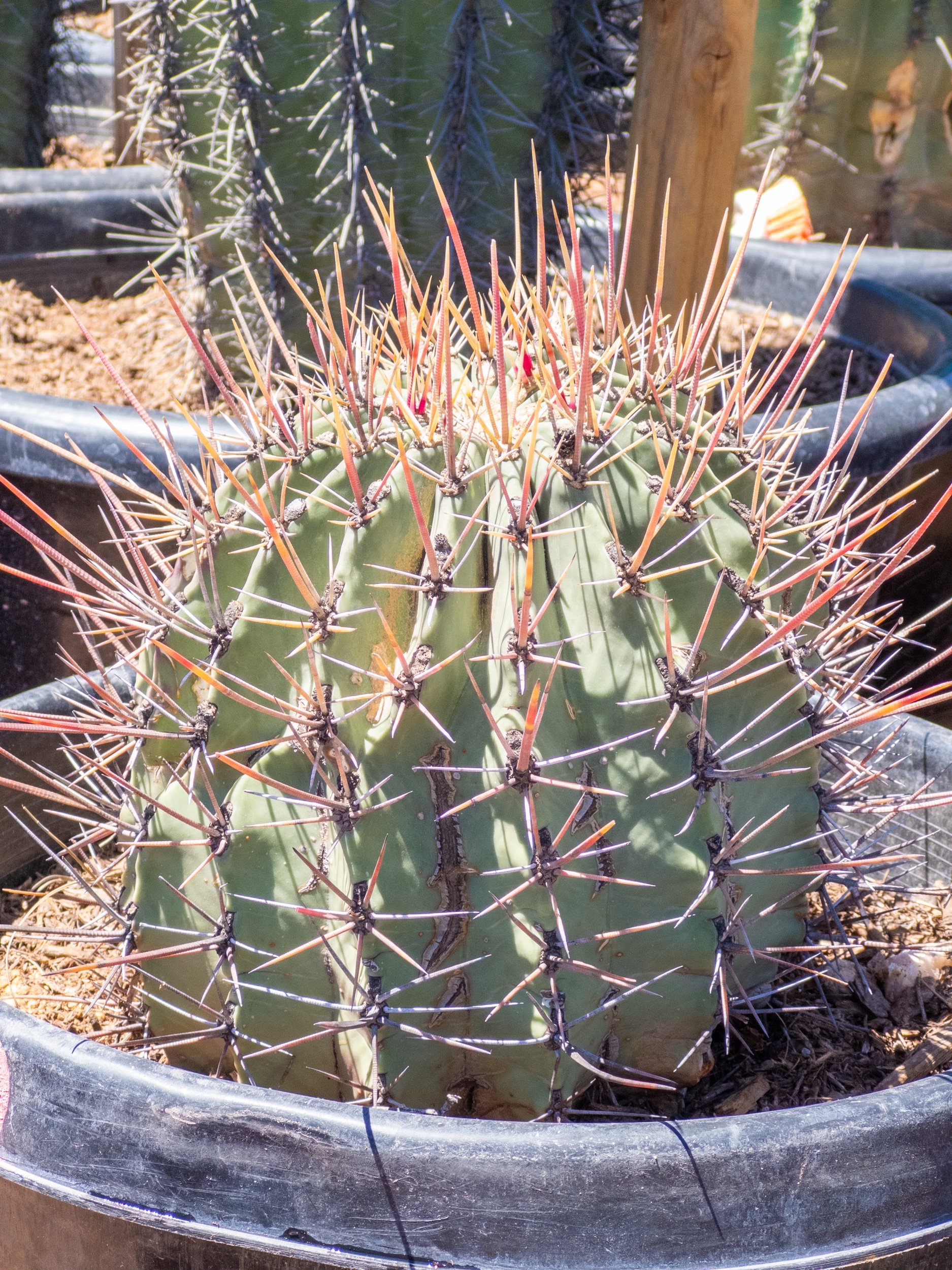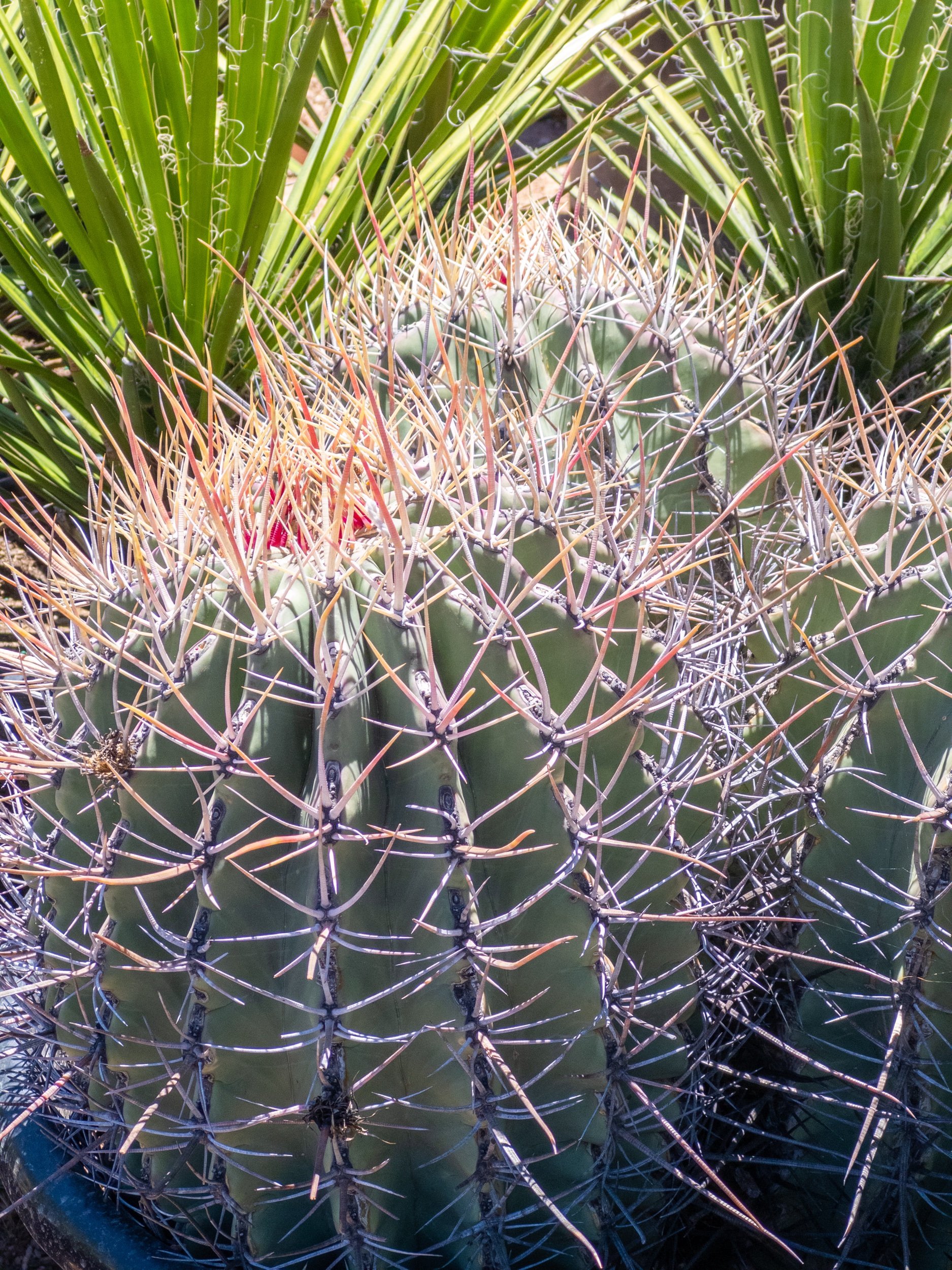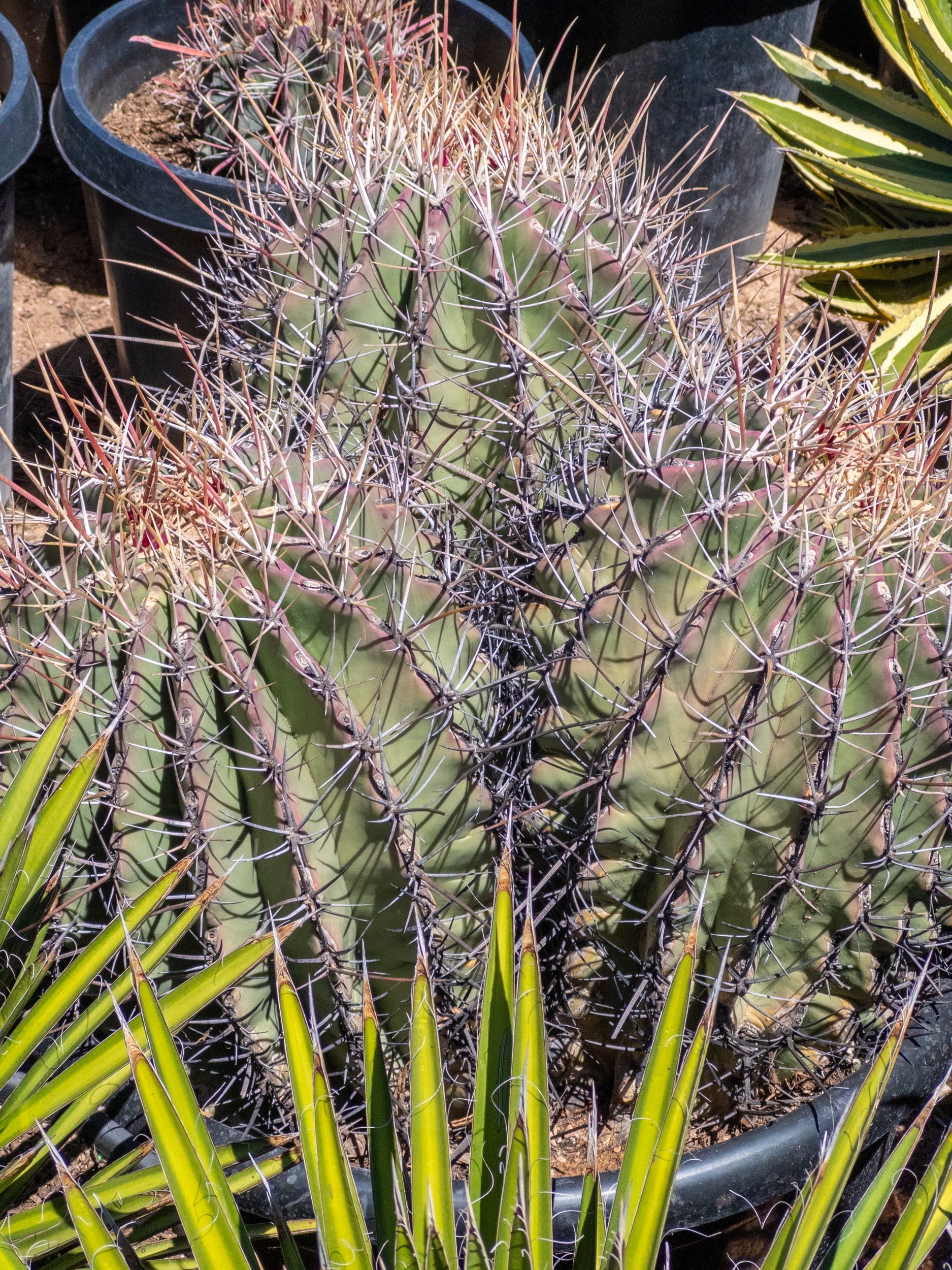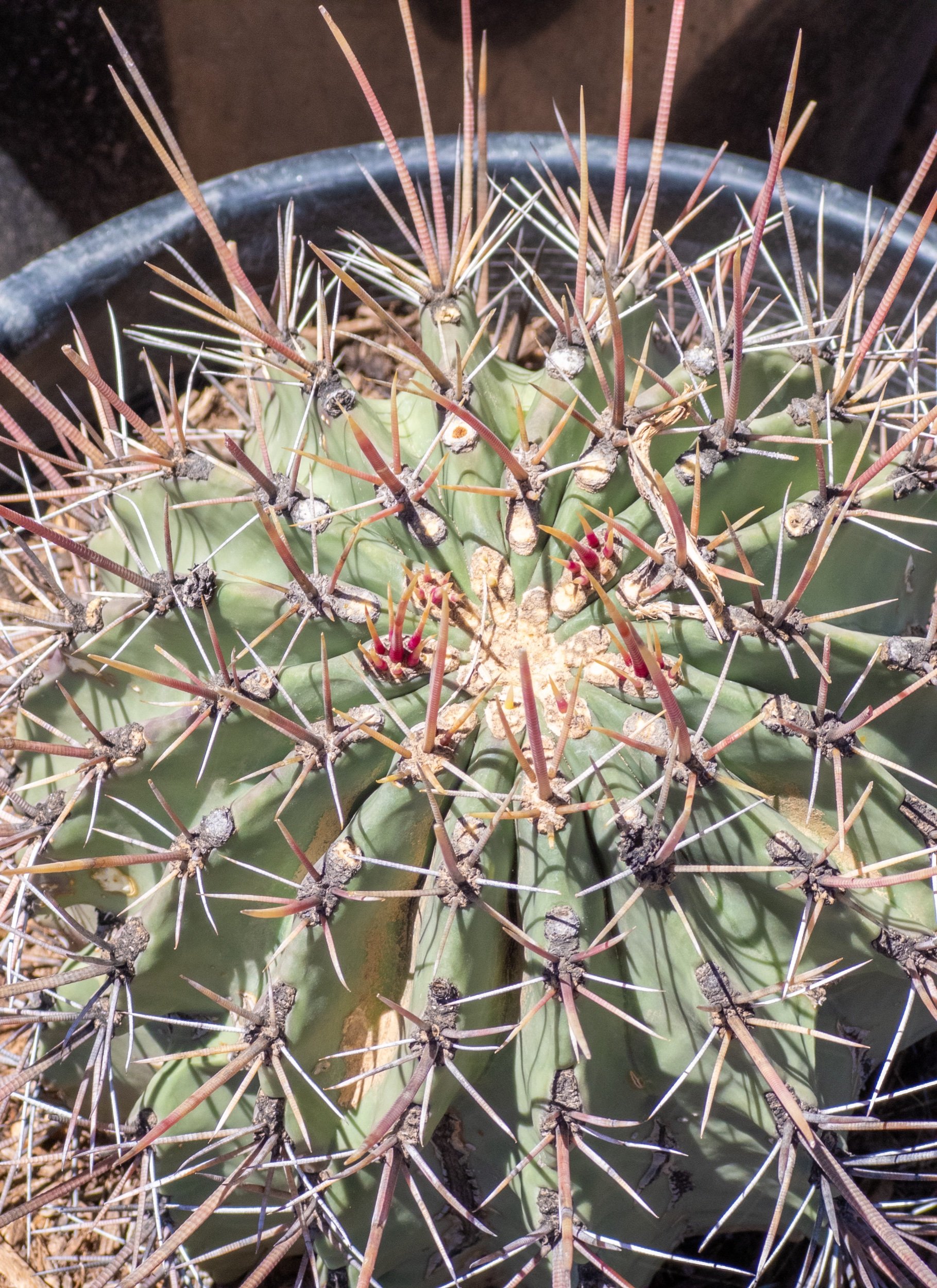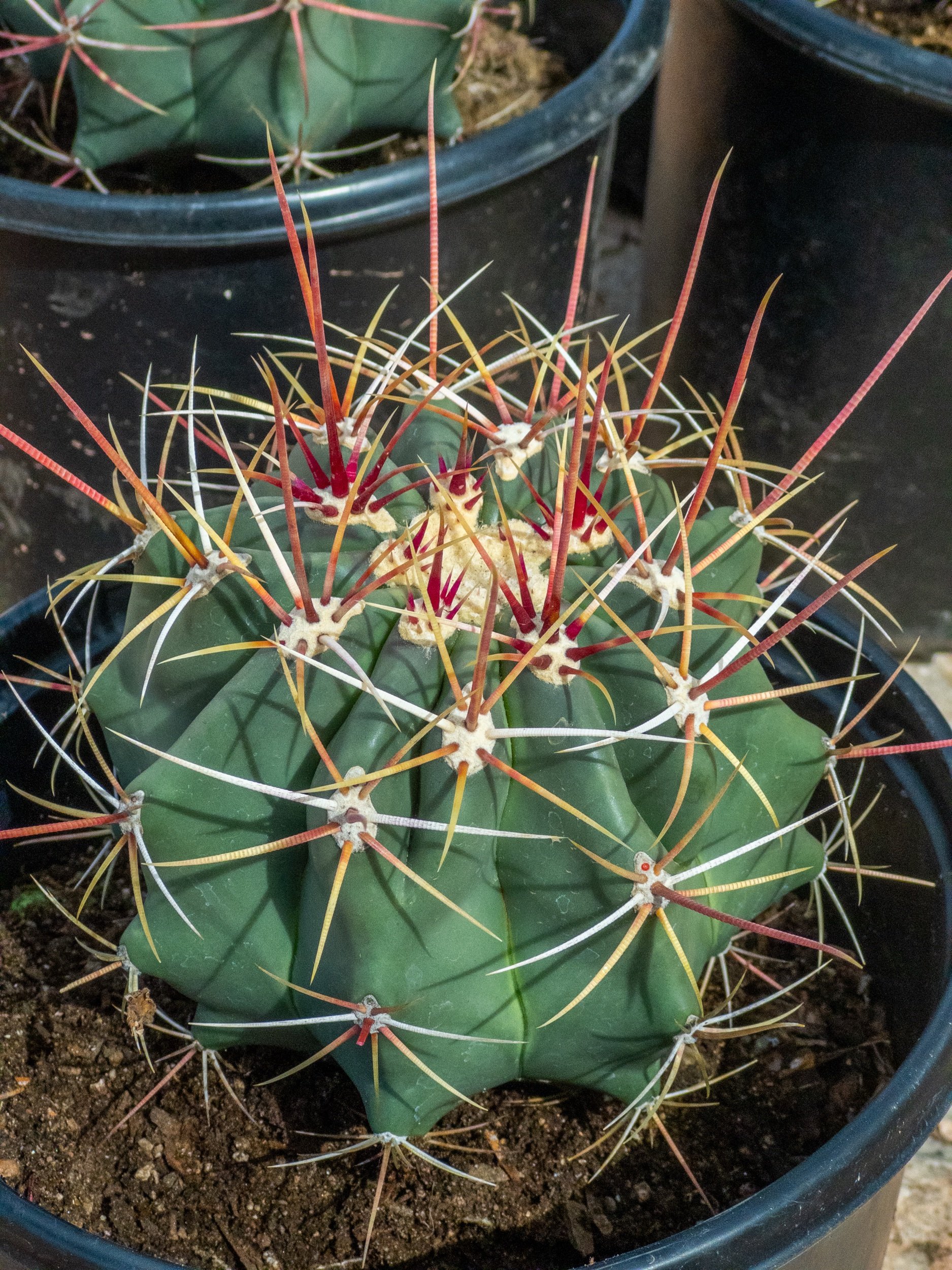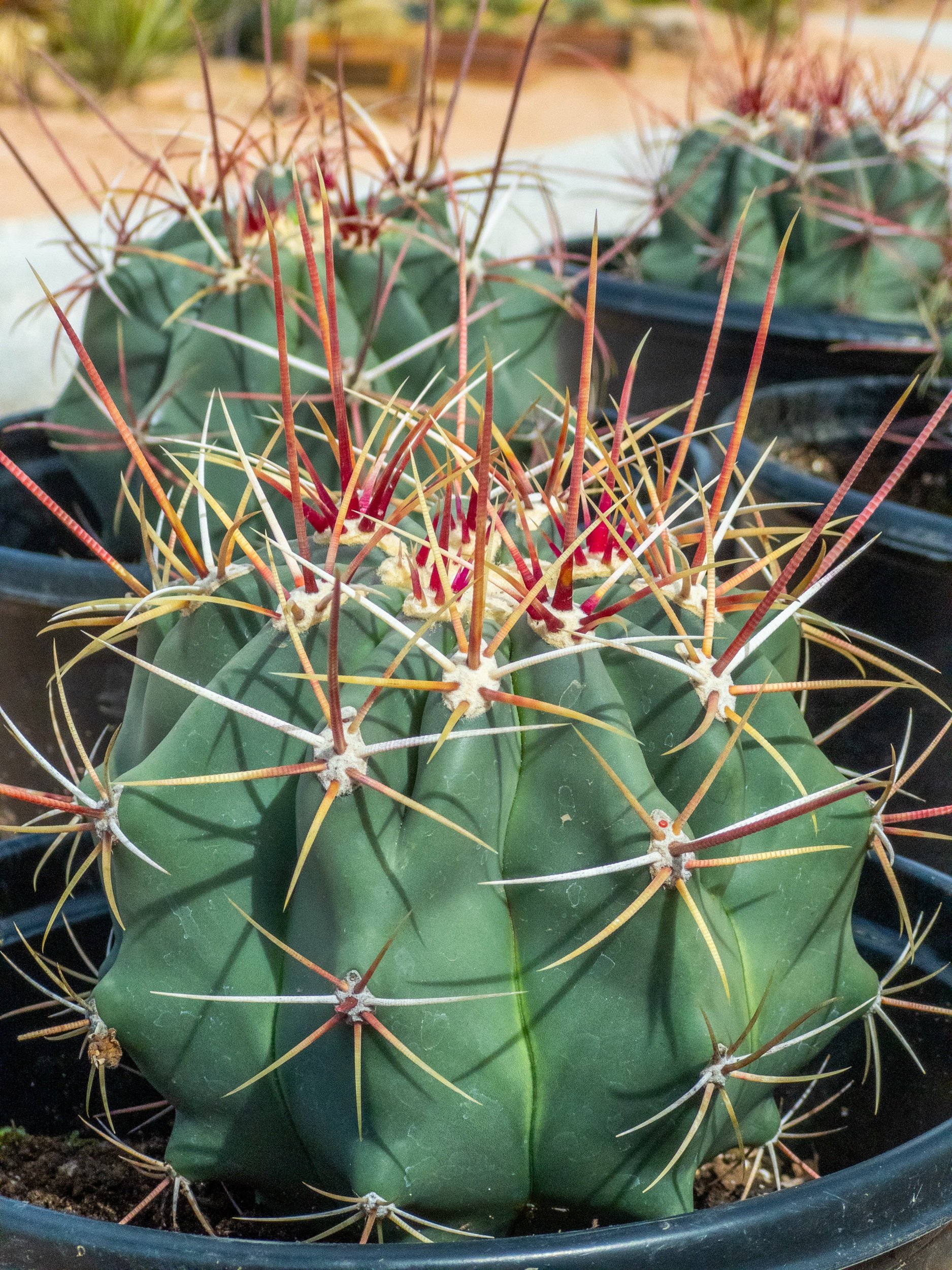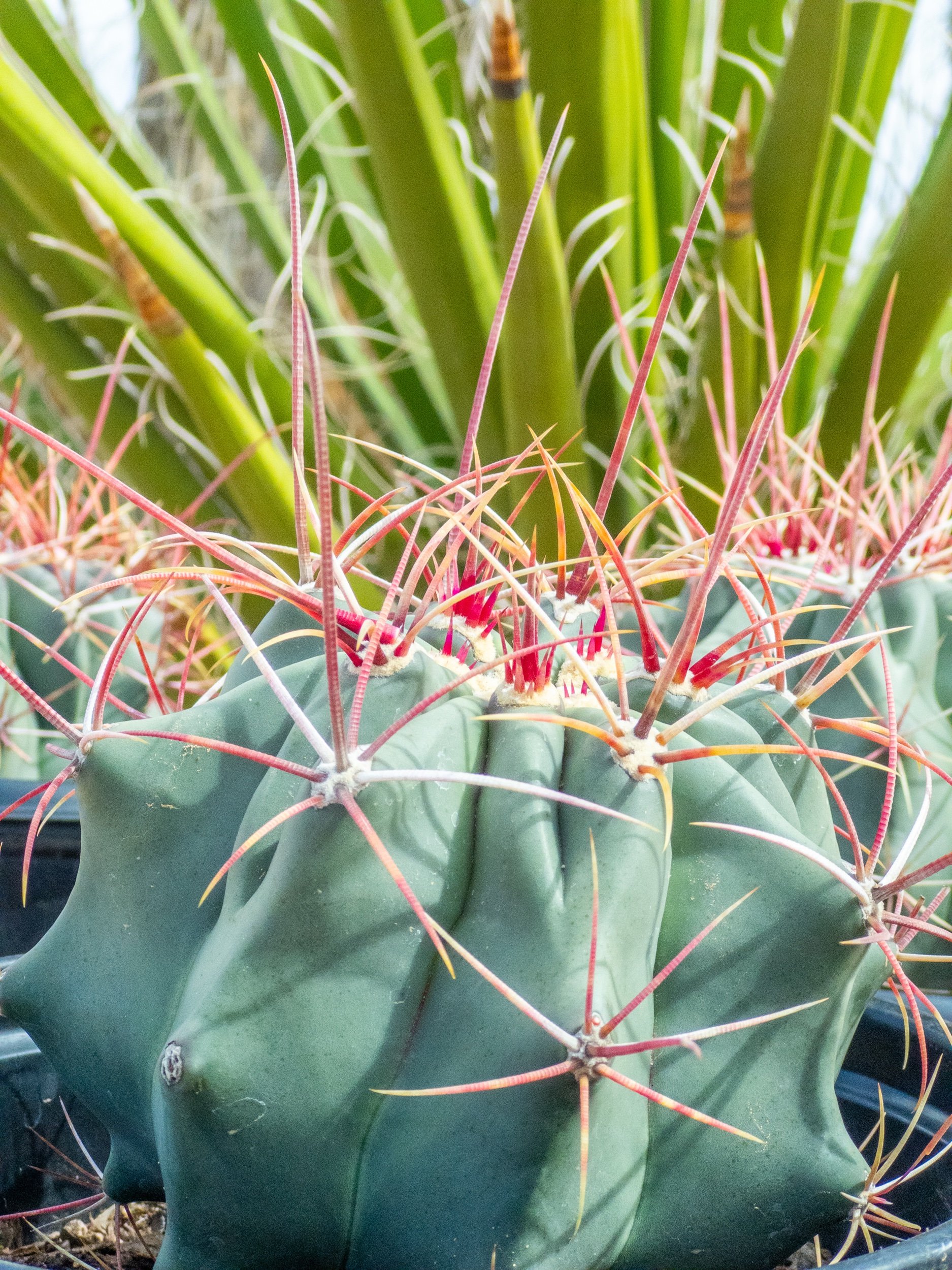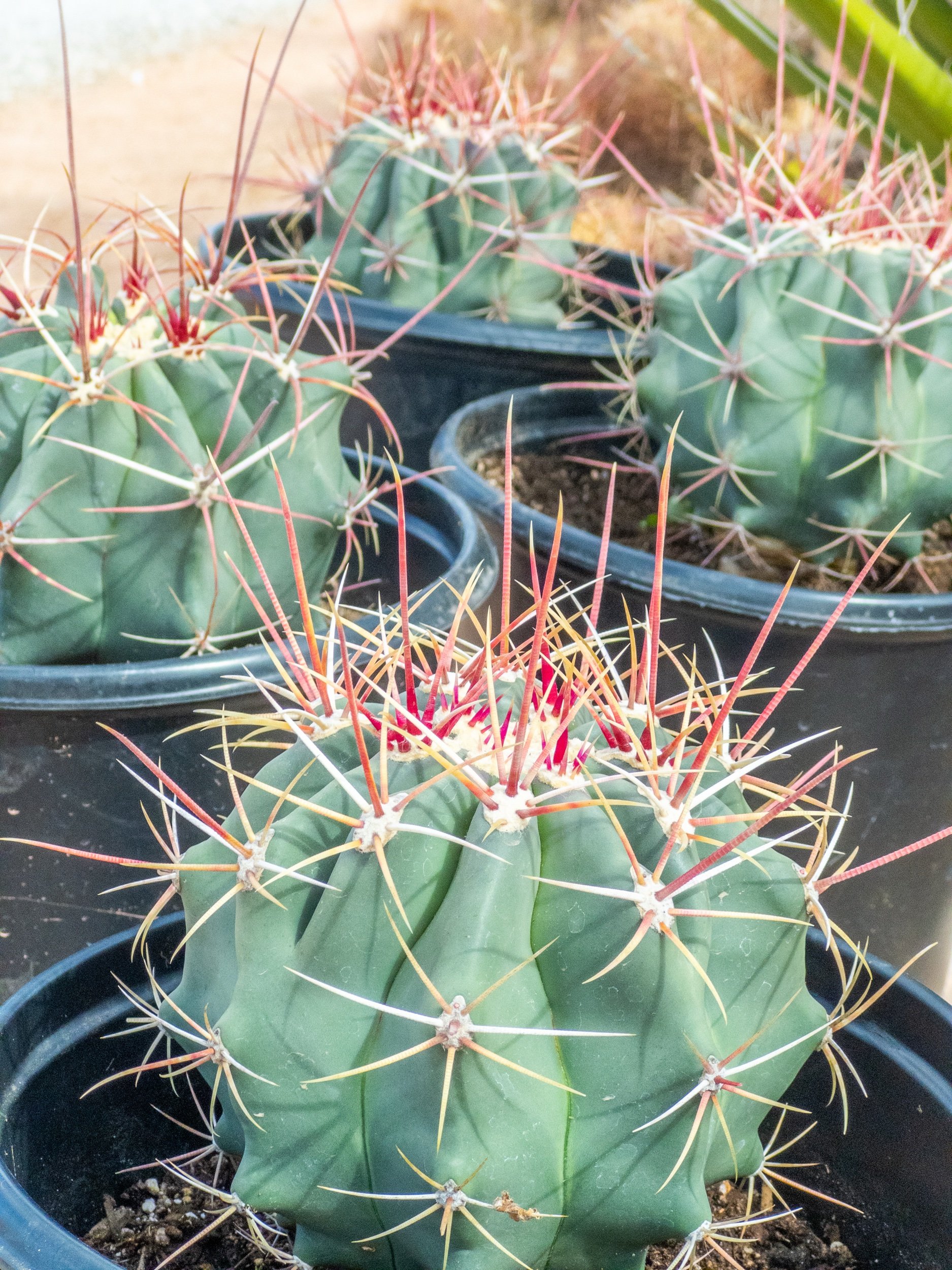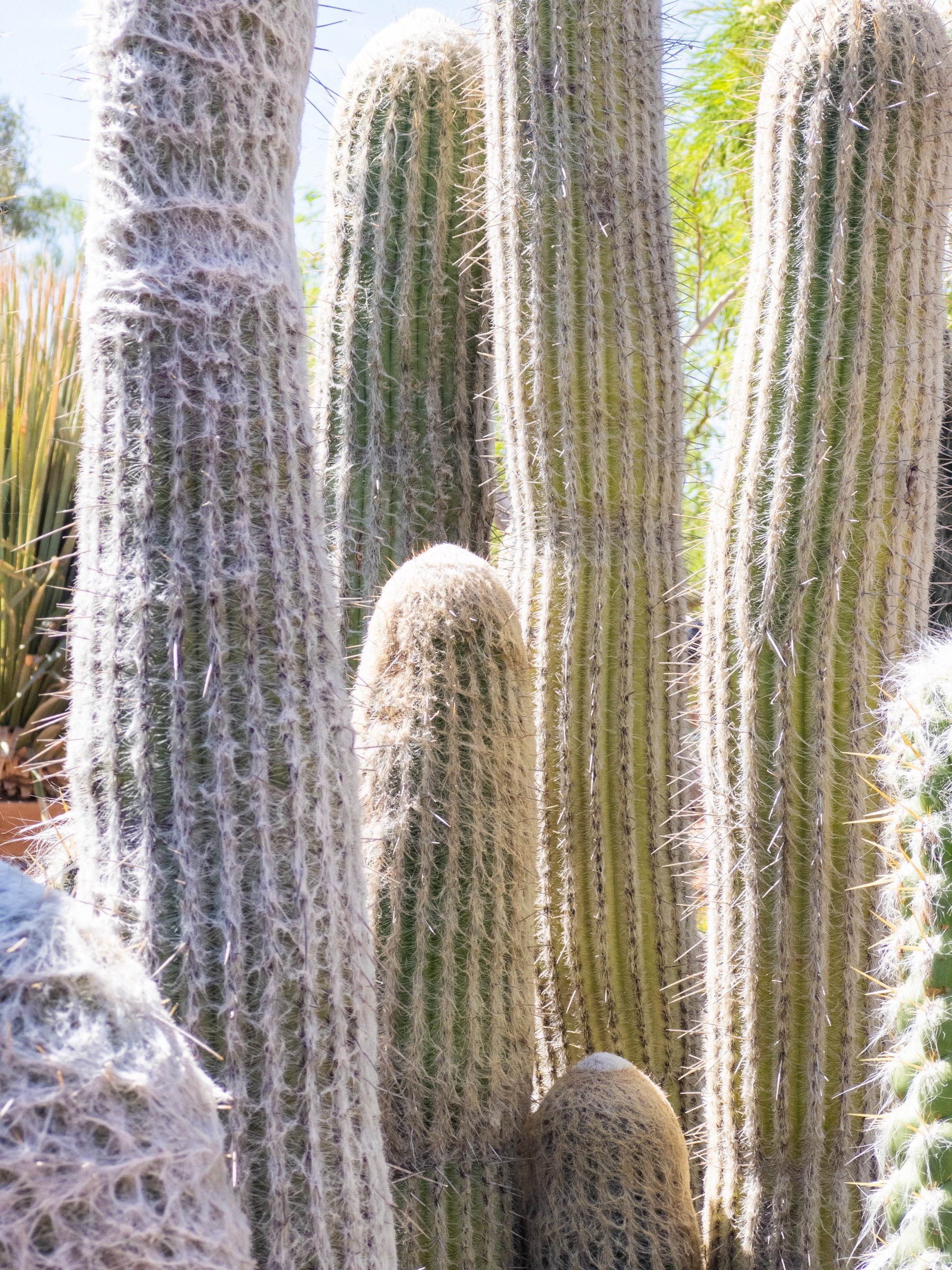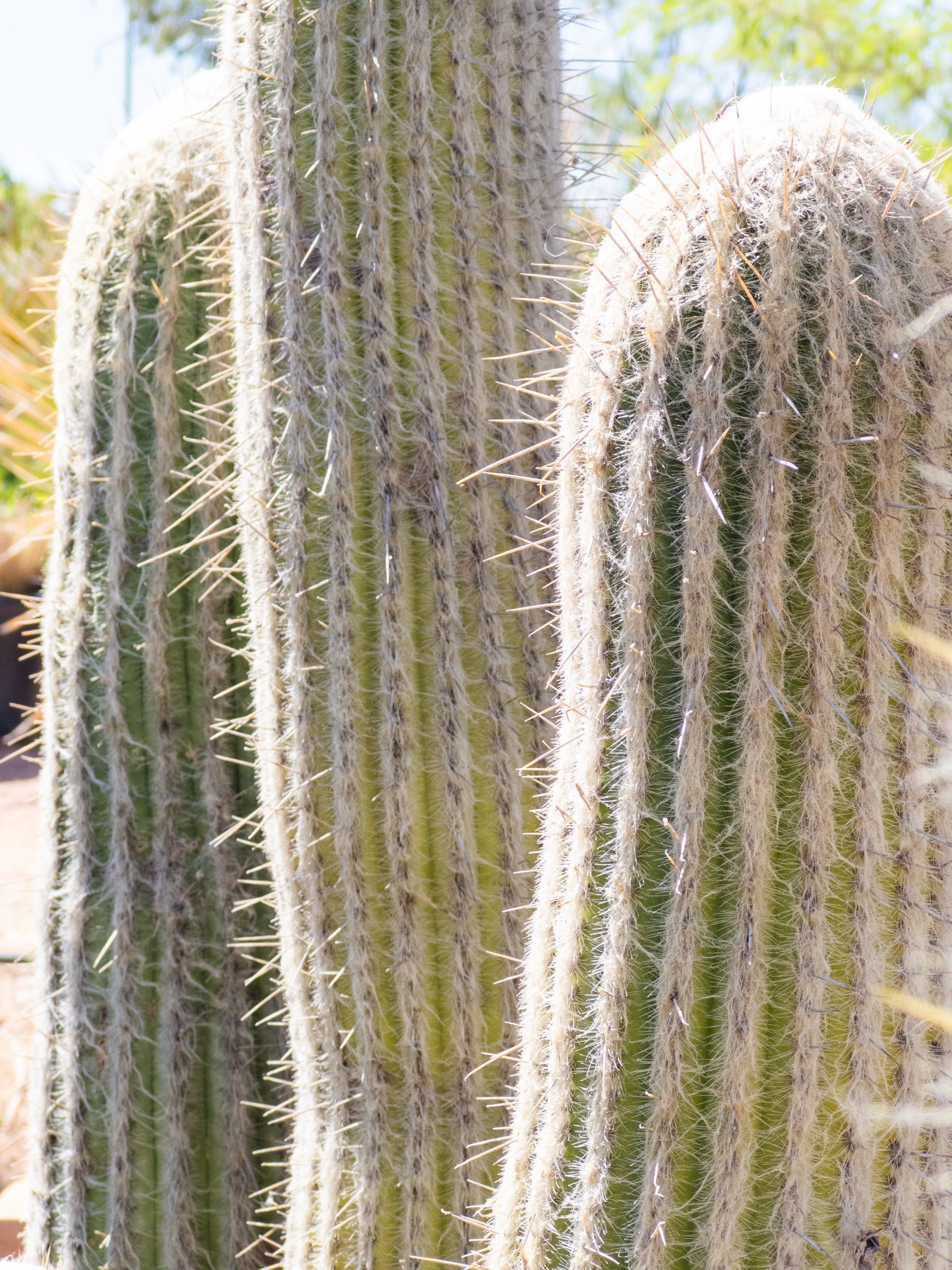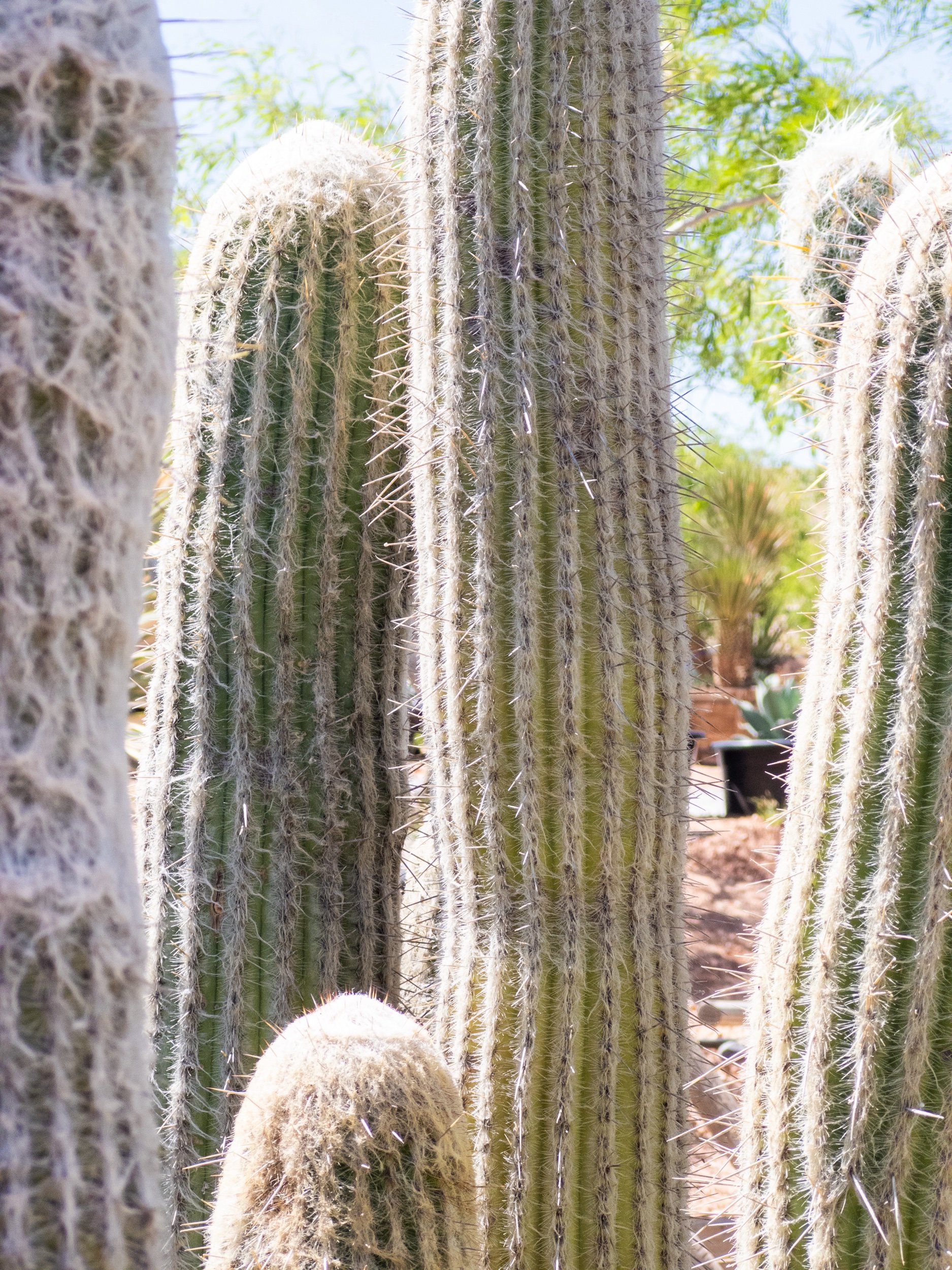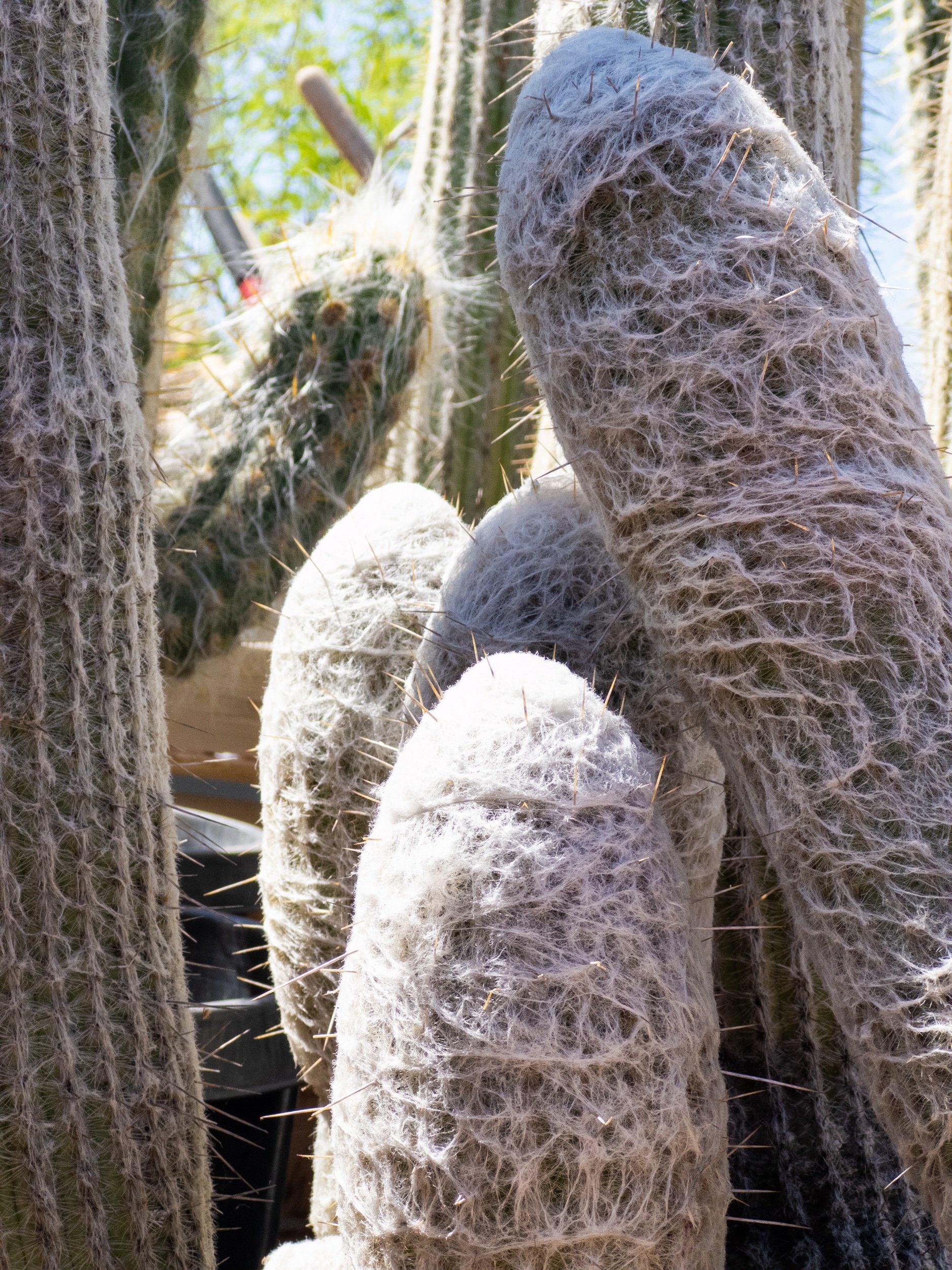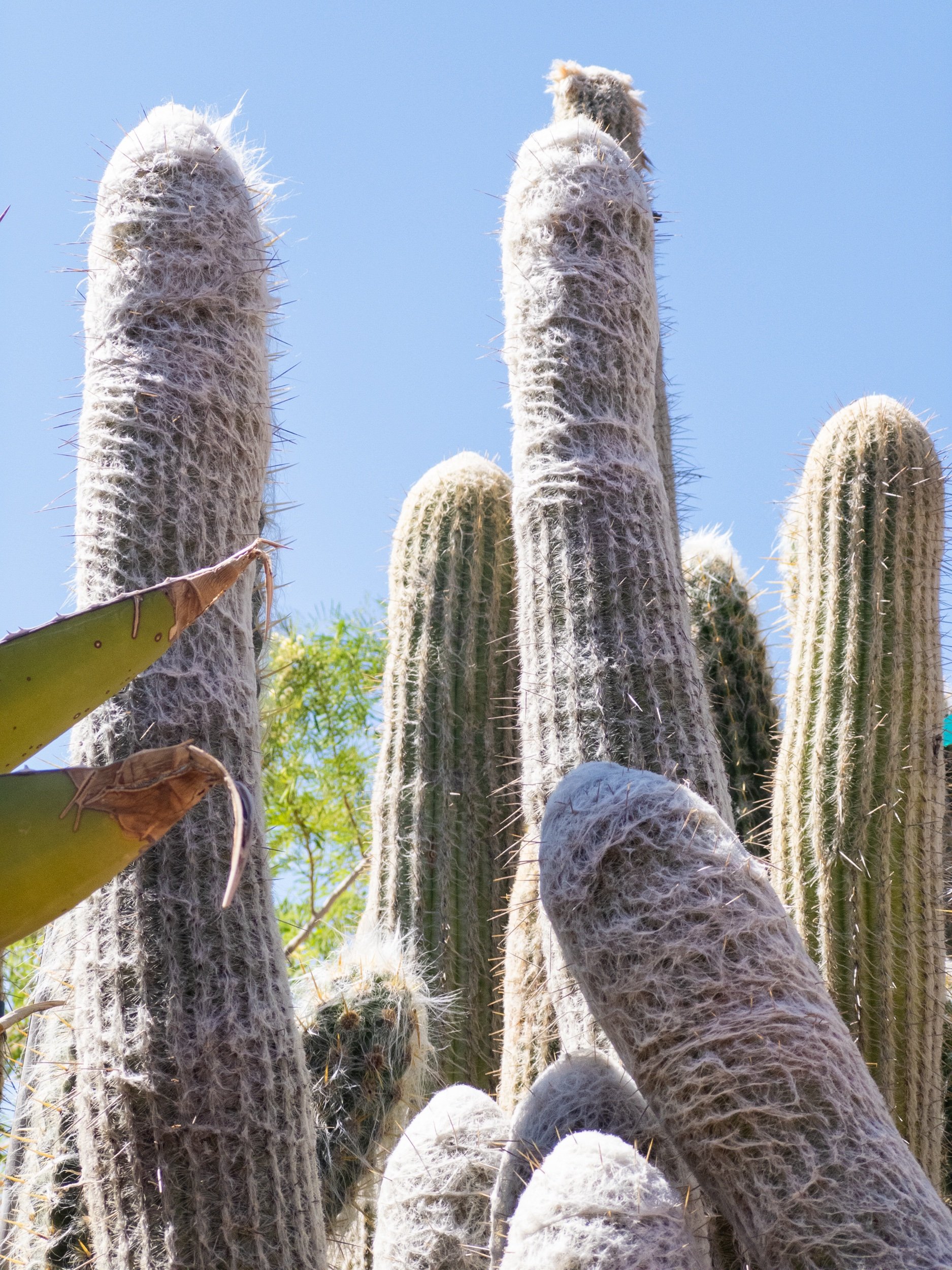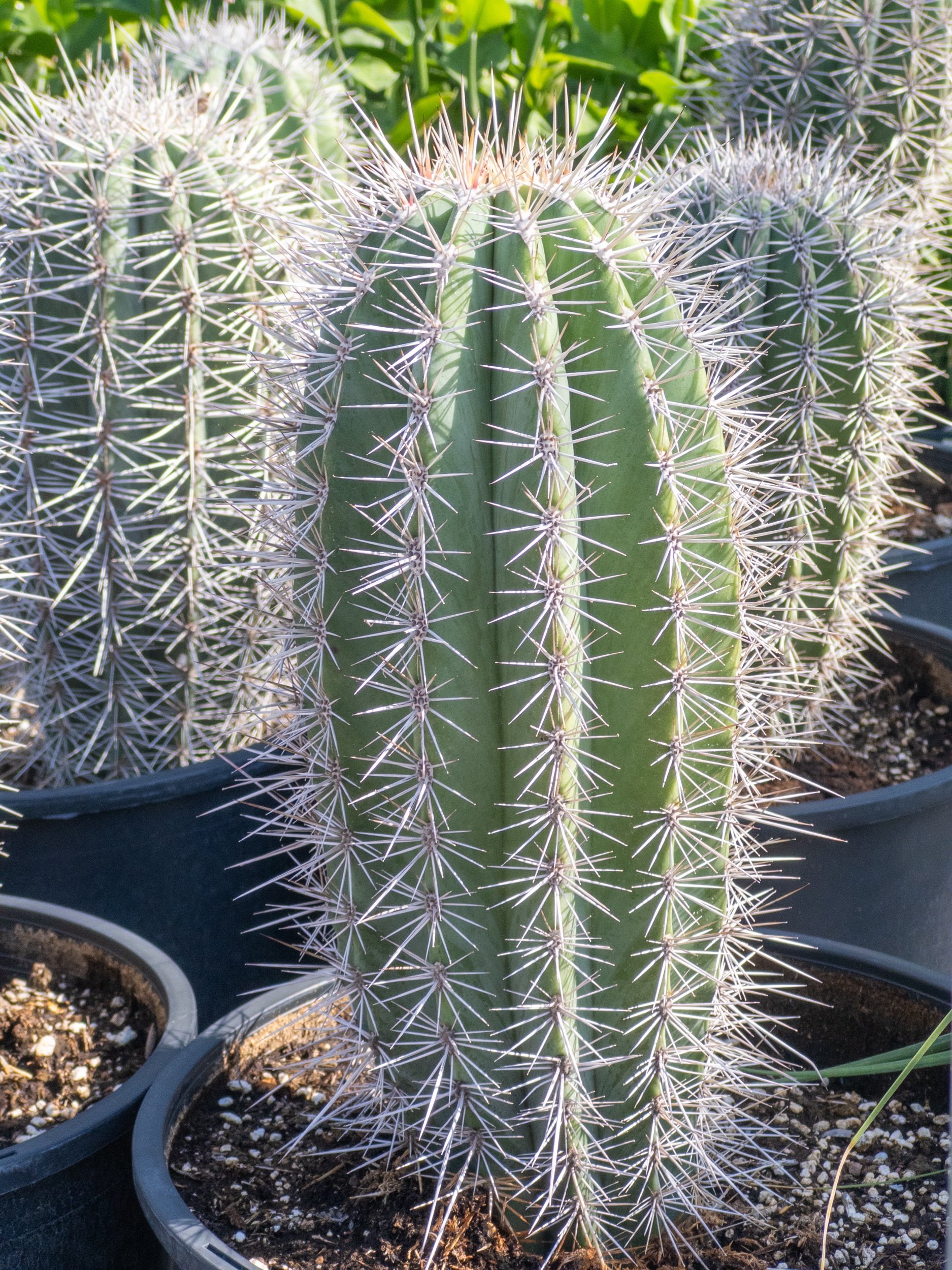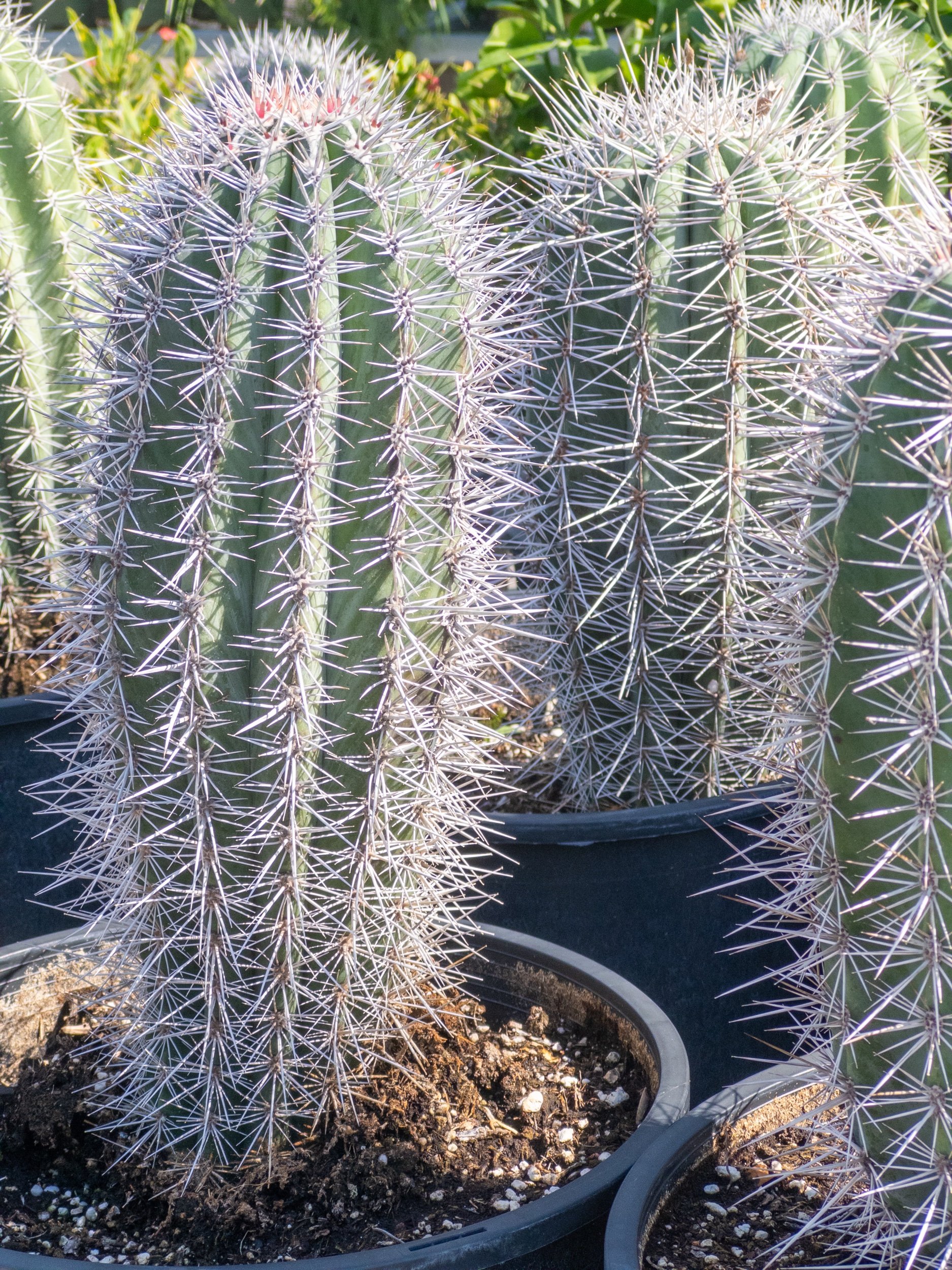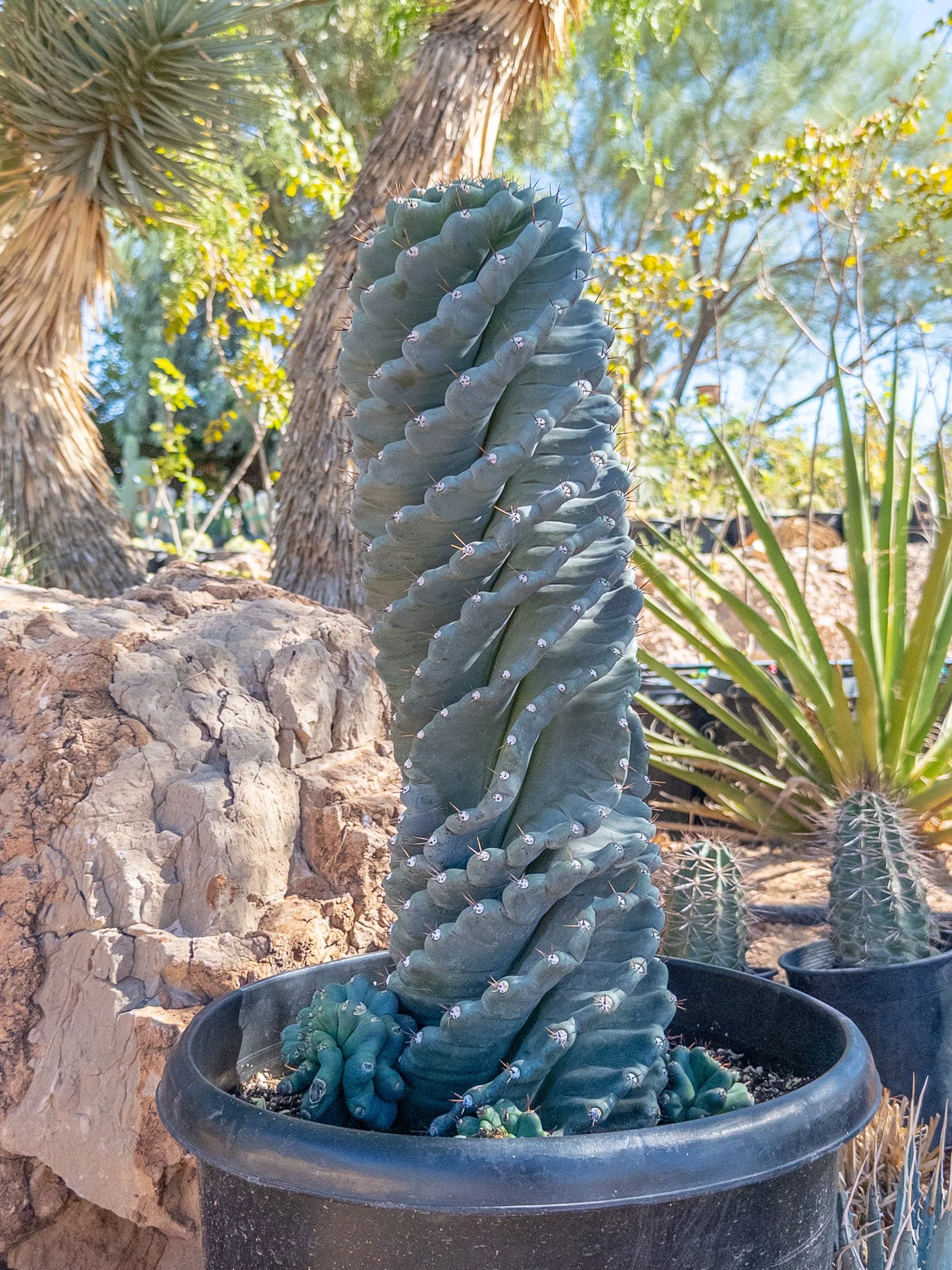 Image 1 of 2
Image 1 of 2

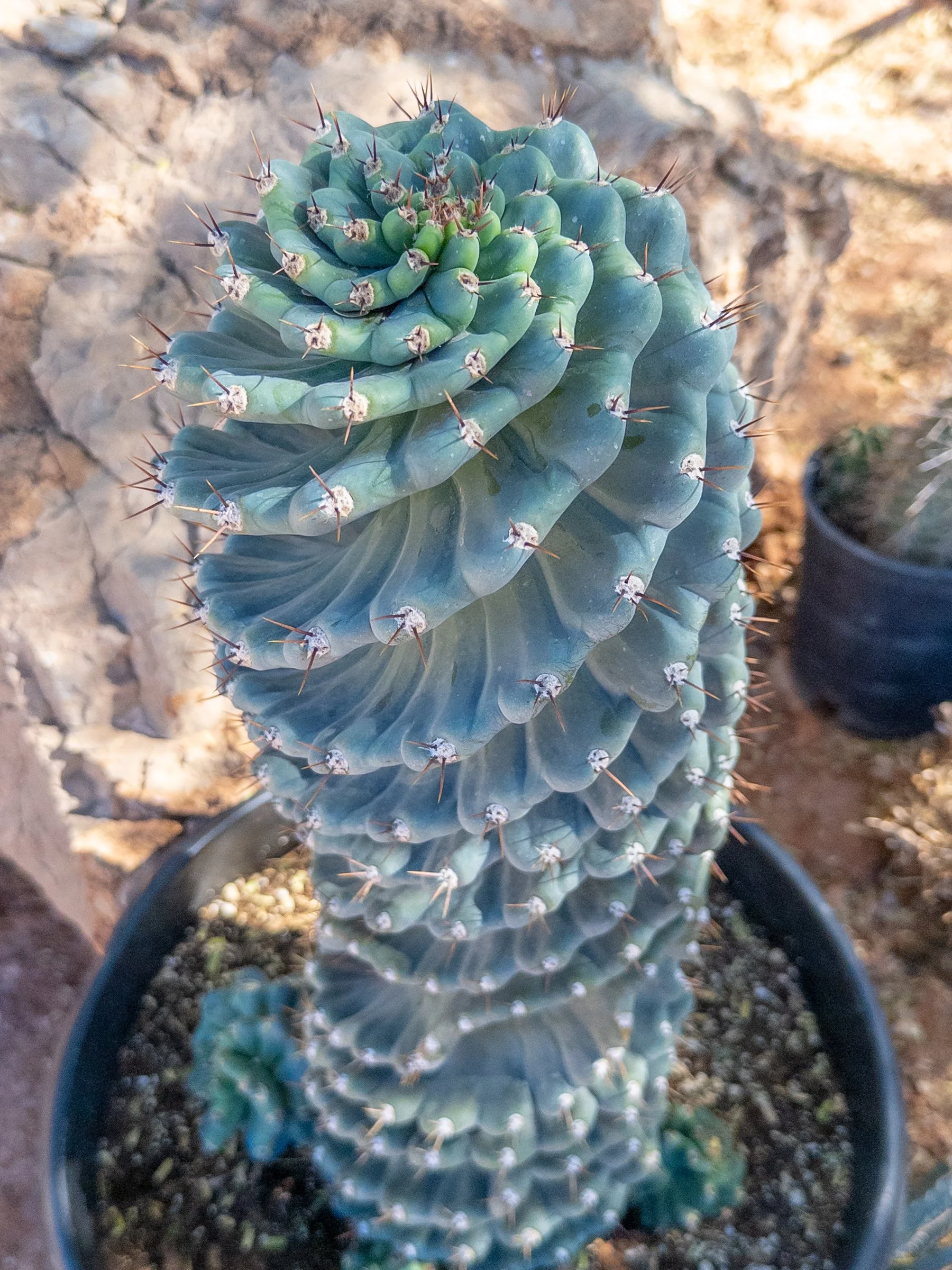 Image 2 of 2
Image 2 of 2



Spiral Cereus / Twisted Cactus
Cereus forbesii ‘Spiralis’
Appearance: This cactus features tall, columnar stems that grow in a distinctive spiral or corkscrew pattern, creating a sculptural, almost surreal effect. The stems are typically blue-green, with 5–9 ribs lined with small spines. It can reach heights of 6–13 feet (2–4 meters) in ideal conditions but grows slowly, making it manageable for container gardening.
• Flowers: Produces large, white, nocturnal blooms in summer, though flowering is rare in cultivation. These may be followed by red or purple fruit.
• Growth Habit: Upright and branching, it forms a single spiraling column or clusters when mature. Its twisting shape is a natural mutation, not a result of pruning or training.
Growing Tips
• Hardiness: Thrives in USDA zones 9–11, tolerating temperatures down to about 25°F (-4°C). Protect from frost.
• Light and Soil: Requires full sun for optimal growth and to maintain its spiral form; use well-draining cactus or sandy soil to prevent root rot.
• Water and Care: Water sparingly, allowing soil to dry completely between waterings (every 2–3 weeks in summer, less in winter). Overwatering can cause rot. Fertilize lightly with a cactus-specific formula during the growing season (spring/summer).
• Uses: Perfect as a statement piece in rock gardens, xeriscapes, or large pots. Its dramatic form suits modern or desert-themed landscapes. Indoors, place near a bright window.
Cereus forbesii ‘Spiralis’
Appearance: This cactus features tall, columnar stems that grow in a distinctive spiral or corkscrew pattern, creating a sculptural, almost surreal effect. The stems are typically blue-green, with 5–9 ribs lined with small spines. It can reach heights of 6–13 feet (2–4 meters) in ideal conditions but grows slowly, making it manageable for container gardening.
• Flowers: Produces large, white, nocturnal blooms in summer, though flowering is rare in cultivation. These may be followed by red or purple fruit.
• Growth Habit: Upright and branching, it forms a single spiraling column or clusters when mature. Its twisting shape is a natural mutation, not a result of pruning or training.
Growing Tips
• Hardiness: Thrives in USDA zones 9–11, tolerating temperatures down to about 25°F (-4°C). Protect from frost.
• Light and Soil: Requires full sun for optimal growth and to maintain its spiral form; use well-draining cactus or sandy soil to prevent root rot.
• Water and Care: Water sparingly, allowing soil to dry completely between waterings (every 2–3 weeks in summer, less in winter). Overwatering can cause rot. Fertilize lightly with a cactus-specific formula during the growing season (spring/summer).
• Uses: Perfect as a statement piece in rock gardens, xeriscapes, or large pots. Its dramatic form suits modern or desert-themed landscapes. Indoors, place near a bright window.
